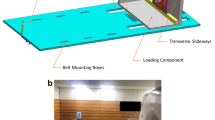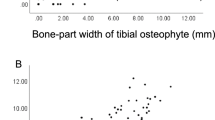Abstract
Objective: To compare the cartilage thickness, volume, and articular surface areas of the knee joint between young healthy, non-athletic female and male individuals.
Subjects and design. MR imaging was performed in 18 healthy subjects without local or systemic joint disease (9 female, age 22.3±2.4 years, and 9 male, age 22.2±1.9 years.), using a fat-suppressed FLASH 3D pulse sequence (TR=41 ms, TE=11 ms, FA=30°) with sagittal orien- tation and a spatial resolution of 2×0.31×0.31 mm3. After three- dimensional reconstruction and triangulation of the knee joint cartilage plates, the cartilage thickness (mean and maximal), volume, and size of the articular surface area were quantified, independent of the original section orientation.
Results and conclusions: Women displayed smaller cartilage volumes than men, the percentage difference ranging from 19.9% in the patella, to 46.6% in the medial tibia. The gender differences of the cartilage thickness were smaller, ranging from 2.0% in the femoral trochlea to 13.3% in the medial tibia for the mean thickness, and from 4.3% in the medial femoral condyle to 18.3% in the medial tibia for the maximal cartilage thickness. The differences between the cartilage surface areas were similar to those of the volumes, with values ranging from 21.0% in the femur to 33.4% in the lateral tibia. Gender differences could be reduced for cartilage volume and surface area when normalized to body weight and body weight×body height. The study demonstrates significant gender differences in cartilage volume and surface area of men and women, which need to be taken into account when retrospectively estimating articular cartilage loss in patients with symptoms of degenerative joint disease. Differences in cartilage volume are primarily due to differences in joint surface areas (epiphyseal bone size), not to differences in cartilage thickness.
Similar content being viewed by others
Author information
Authors and Affiliations
Additional information
Received: 19 June 2000 Revision requested: 4 August 2000 Revision received: 30 November 2000 Accepted: 6 December 2000
Rights and permissions
About this article
Cite this article
Faber, S., Eckstein, F., Lukasz, S. et al. Gender differences in knee joint cartilage thickness, volume and articular surface areas: assessment with quantitative three-dimensional MR imaging. Skeletal Radiol 30, 144–150 (2001). https://doi.org/10.1007/s002560000320
Issue Date:
DOI: https://doi.org/10.1007/s002560000320




